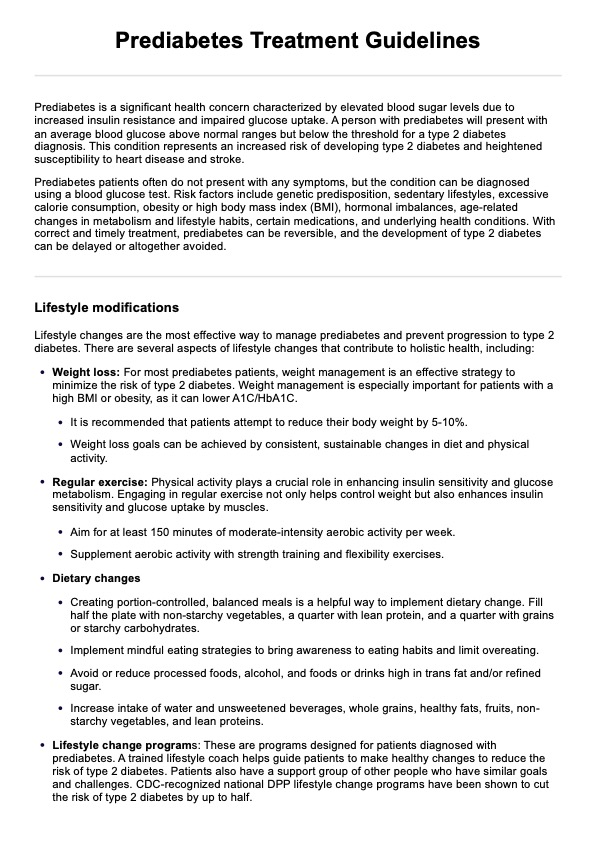While lifestyle modifications are the cornerstone of prediabetes management, medication such as metformin may be prescribed for individuals at high risk of developing type 2 diabetes mellitus.

Learn more about prediabetes in this guide. Access free Prediabetes Treatment Guidelines for better patient education.
While lifestyle modifications are the cornerstone of prediabetes management, medication such as metformin may be prescribed for individuals at high risk of developing type 2 diabetes mellitus.
The first line of treatment for prediabetes involves lifestyle modifications, such as dietary changes, regular exercise, and reducing body weight to improve insulin sensitivity and prevent disease progression. The American Diabetes Association provides nutrition guidelines for preventing and managing diabetes.
Diabetes diagnosis typically involves measuring blood glucose levels (such as blood glucose tests, A1C tests, or oral glucose tolerance tests) to determine if they are outside normal ranges. For example, a fasting plasma glucose level of 100-125 mg/dl typically indicates prediabetes.
EHR and practice management software
*No credit card required
Free
$0/usd
Unlimited clients
Telehealth
1GB of storage
Client portal text
Automated billing and online payments